Humanoid reptilians’ skulls: just a scale problem
Some have suggested that the “mummified” heads found in Nasca, Peru, by grave robbers were made from cats ‘… or dogs’ skulls.
The vagueness about cat or dog, is already somewhat suspicious. Indeed, the morphology of these two species is still relatively different (Fig. 1 and 2).
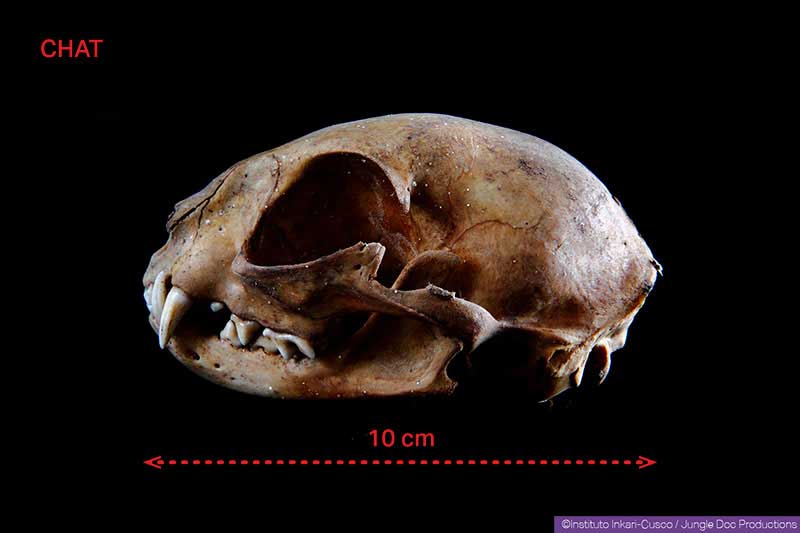
Figure 1 : cat’s skull.
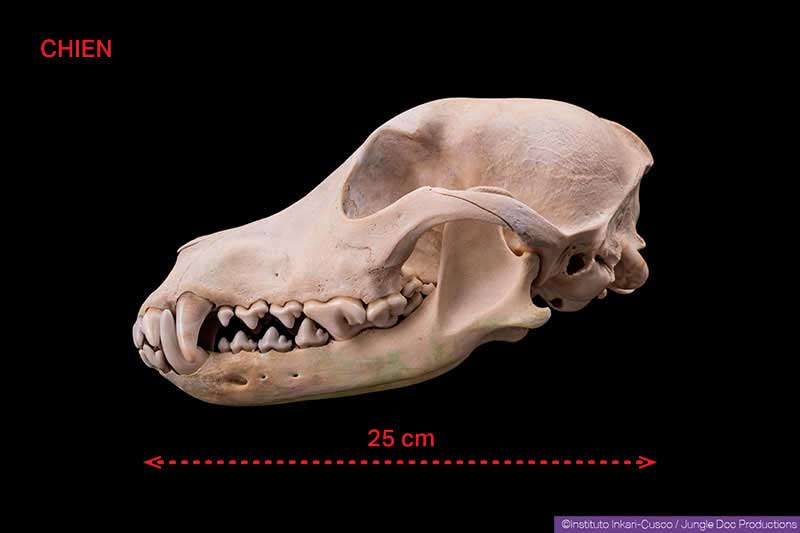
Figure 2 : dog’s skull.
The giant cat of Peru
Take a cat’s skull. The posterior part of the skull would have been used, which would have been then turned over, the back becoming the front face of the head. Besides the fact that there is no trace of manipulation, neither cut, incision, nor “fill up”, there is a flagrant incoherence in this brilliant demonstration according to the concept of scale and size.
A cat’s skull is approximately 10 cm long in its biggest length(Fig. 3). Only one part is used, the rear part which is about 6 cm long. However, “mummified” skulls measure at least 13 to 14 cm (Fig. 4). Either more double of the part “cut” in the cat’s skull. It would be no longer a cat but a panther … Or an endemic species : the giant cat of the desert of Nasca?
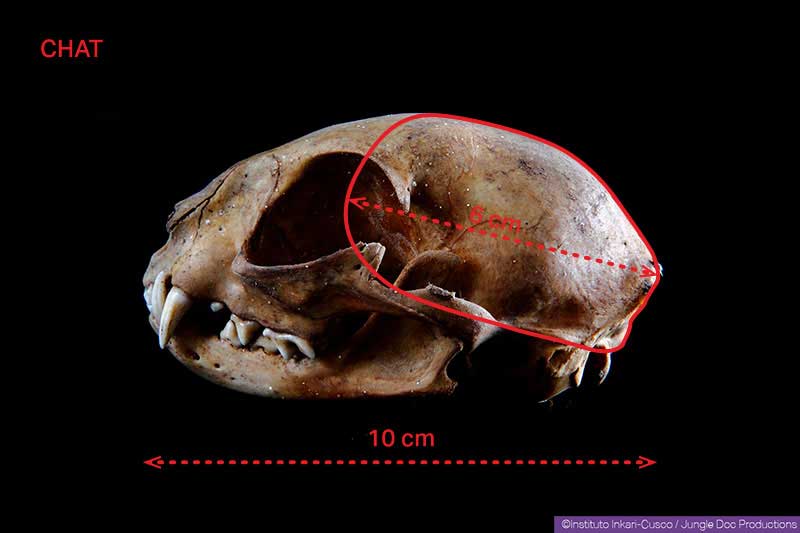
Figure 3 : in red, part allegedly carved in a cat’s skull.
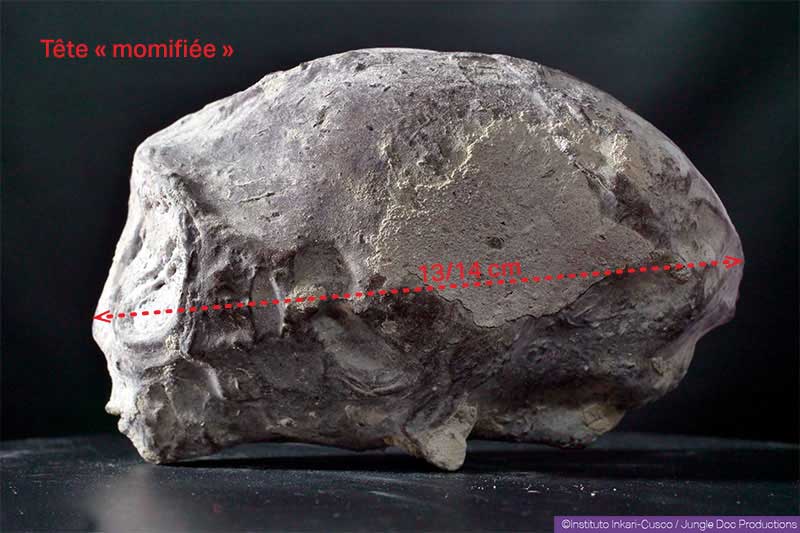
Figure 4 : “mummified” skull, allegedly extracted from the dog’s skull.
Or a dog?
Let us take a dog’s skull now. The diversity in this species is greater than of cats’. Let us argue upside down. The back part of the skull is extracted, which would then become the skull of one of the entities once turned front/back, and thus would measure 13/14 cm (Fig. 5). On the picture of the dog’s skull, we can see that this rear part represents about half of the total length of the skull. Thus it would mean that the whole skull would measure approximately 25 cms.
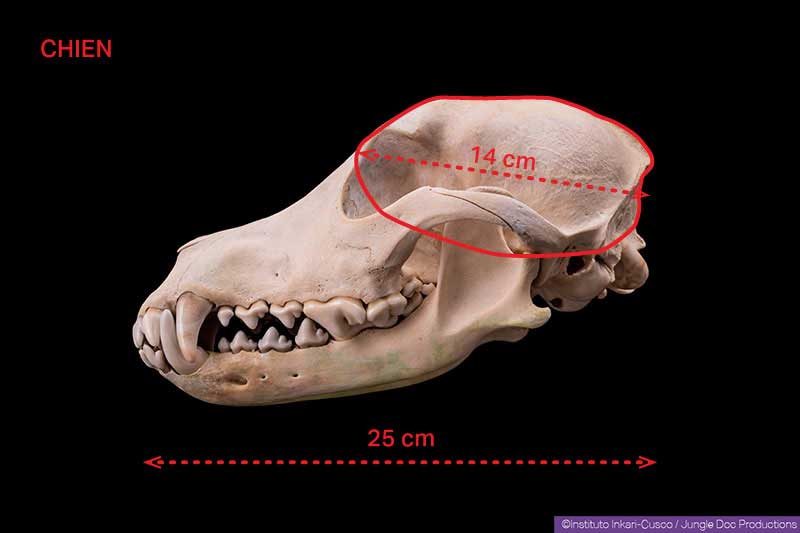
Figure 5 : in red, part allegedly carved in a dog’s skull.
As for the scale and the dimensions, it is quite credible here. Except that :
- the “lower part” must be “recorked” in red (Fig. 6); no trace of other materials than biological,
- the same for the rear part of this new skull, in blue,
- the orbits would be necessarily dug to simulate the location of the eyes, in yellow; no traces of “manufacturing”.
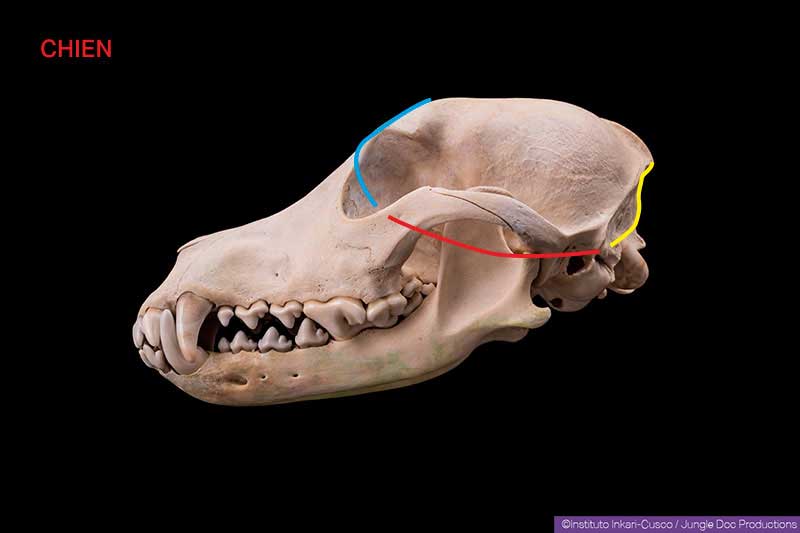
Figure 6 : representation of the parts of the dog’s skull to “modify ».
- The original occipital hole (in green) should be recorked and another one shoud be dug (purple), square shaped, situated closer to the center (Fig. 7, 8 and 9) …
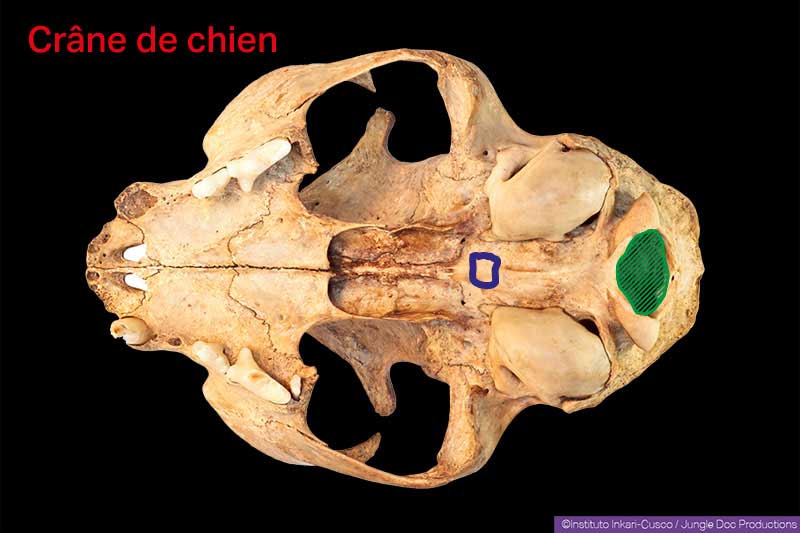
Figure 7 : dog’s skull. in green the occipital hole that should be “recorked”. In purple, the occipital hole that should be dug.
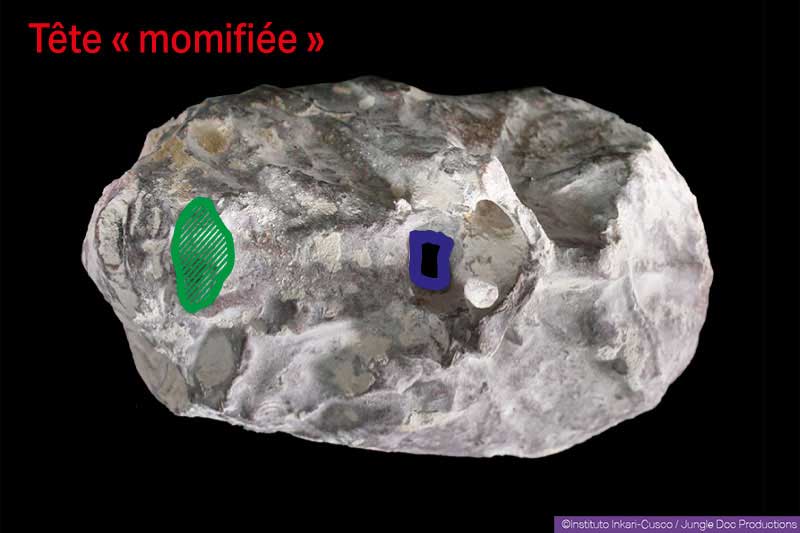
Figure 8 : “mummified” skull. in green, the original occipital hole that should be recorked. In purple, the new occipital hole that should be dug.
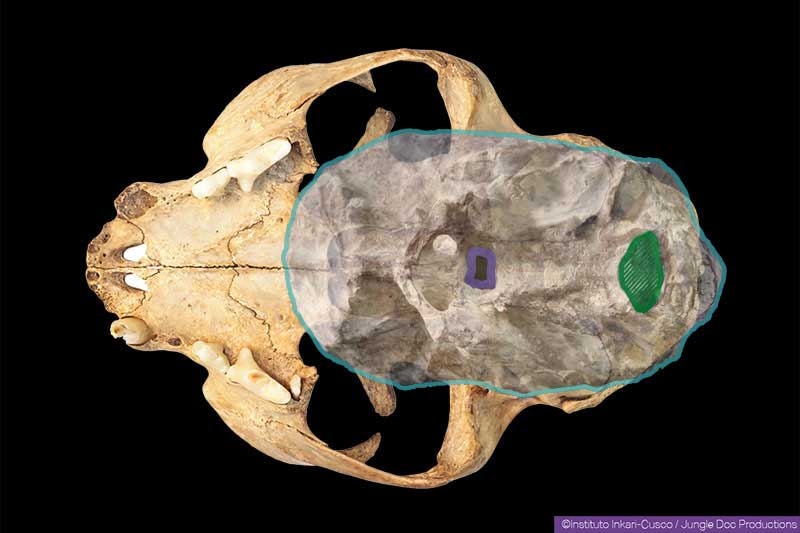
Figure 9 : superimposition of a “mummified” skull and a dog’s skull.
Unless using very advanced techniques, this hypothesis is therefore unlikely :
- they would be remarkable in the case of an old fraud, considering the age of these objects (the first C14 analyzes give 1,100 years),
- they would be just as remarkable in the case of a contemporary fraud by treasure robbers, who would have missed their vocation.
Conclusion
We have demonstrated that it couldn’t be an assembling made from cats’ or dogs ‘ skulls. in any case . This hypothesis is just a magic trick to keep the good people in their wonderful world. If size or shape differences are not considered, everything is possible and the Eiffel Tower can hold in the hands of a child (Fig. 10). But the dream does not last with the rigorous laws of reality. The skulls of Nazca have nothing in common with canine or feline skulls.

Figure 10 : the Eiffel Tower in the hands of a child.
As things are, we can still try to oppose the possibility that dogs’ or felines’ skulls, could reach approximately an equal dimension to the skulls of Nazca, depending on various stages of their development and according to their race. But they should have been obviously machine-finished to obtain an identical organ looking like the skulls of Nazca. Some bones would have been planed or cut and some material would have been added in some places. Unfortunately, X rays and scanners demonstrate all the opposite and confirm the integrity of the skulls (Fig. 11).
Of course, this integrity would still be possible to imitate with very advanced technologies by the few specialists who employ them. But these technics are well beyond the reach of simple grave robbers. We can therefore conclude that no trace of fraud involving the integrity of the skulls has been discovered or demonstrated until now.
Skulls are therefore officially considered as authentic and their origin remains unknown.
Alain Bonnet – Proofreading / Corrections : Thierry Jamin – Michel Ribardière – Translation : Catherine Rayer
Pictures : Instituto Inkari Cusco/Jungle Doc Productions – Adobe Stock

Figure 11 : scan from the back to the front of a “mummified” head.



